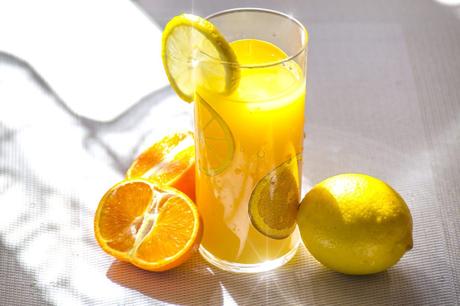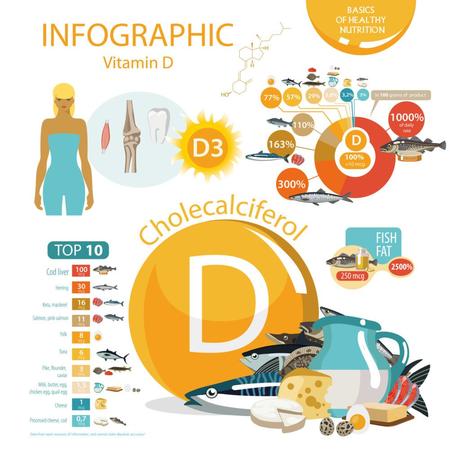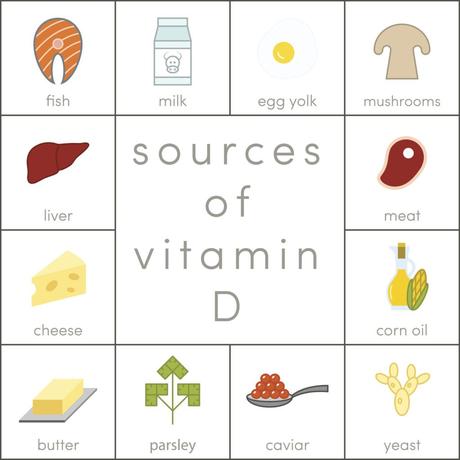You've probably heard of vitamin D deficiency. Vitamin D is famous for being a nutrient you can get from the sun, making it a great excuse to go to the beach!
You can get it from some foods, too, including egg yolks and fish. If you have enough, your bones will be healthy and strong. But in this age of office work, obesity, and prepackaged food, it's easy to develop a deficiency. What happens when you don't get enough vitamin D? And how can you avoid developing a vitamin D deficiency?
Let's start with the basics. Vitamin D is a fat-soluble steroid. Yes, a steroid! (Doctors call it a secosteroid because of a quirk of its chemical structure.) Vitamin D is also one of the thirteen vitamins that your body absolutely needs to function. The others are:
- B vitamins. There are a bunch of these, including niacin, thiamine, biotin, vitamin B-6, vitamin B-12, riboflavin, folate, and pantothenic acid.
Funnily enough, vitamin D isn't technically a vitamin. It's just called that because the researcher who discovered it first found it in cod-liver oil and vitamins tend to come from food.
However, D barely shows up on the menu. Egg yolks contain vitamin D, as does fish. Dairy and some grains can be artificially fortified with vitamin D, too, which is one reason why milk is supposed to be so good for your bones. (Vitamin d actually helps your body to digest and process calcium!)
But dairy and whole grains don't naturally contain this important chemical, and prior to the 20th century, it wouldn't have been present in milk and bread. In fact, the principal source of your body's necessary vitamin D is supposed to be the sun!

When UVB light hits your skin, that light interacts with a substance in your skin called provitamin D3, which changes into vitamin D.
However, your body can't use it yet. Vitamin D has to be processed by your liver and kidneys first. But once that happens, vitamin D promotes calcium and phosphorus absorption in your intestines, meaning that your body can use those minerals to build strong bones, hair follicles, and a robust immune system.
You can imagine what the consequences of a vitamin D problem might be. If vitamin D isn't available enough in your body, then your body won't be able to keep your bones strong enough to support you correctly.
This can lead to serious health issues, especially for children. Since vitamin D supplements were invented and vitamin D fortification in food became popular, the once-rampant disease known as rickets has become rare in the developed world.
Rickets causes the bones of infants to become soft, leading to stunted growth, weakness, and deformities, especially hunched backs and bowed legs.
Once upon a time, it was so common that it was taken for granted that some children would develop it.
The discovery that exposure to the sun could correct the problem led to the term and practice of "sunbathing." Later, the discovery that cod-liver oil could do the same thing led to a much less pleasant set of childhood memories!
Vitamin D does a lot more for your body than just build strong bones. If you develop a deficiency as an adult, you can experience other symptoms, bone-related and otherwise, that may be less obvious and more insidious. I'll talk about those a little more in a minute.
If there's an easy way to say something, then the medical community will think of a complicated alternative!
Many medical terms come from Greek because the Western medical tradition was founded on early Greek medicine.
This fancy name for vitamin D deficiency is an echo of that ancient tradition. The word "hypo" means below or under, and the suffix "-osis" indicates a state, process, or condition. Hypovitaminosis is just another way to say "too little of this vitamin exists in your body." Hypovitaminosis D means "too little vitamin D."

I've been talking about vitamin D as though it were just one substance, but that's actually not quite true. Vitamin D falls into two separate groups: vitamin D2 and vitamin D3.
Vitamin D2 is also called ergocalciferol. (Although some of my readers might like to know the official name, I'm just going to stick with "vitamin D2" for simplicity.)
D2 doesn't come to you from the sun at all. It's strictly dietary, and on top of that, it's primarily artificial. ( Some mushrooms make tiny amounts of D2, and those can be specially grown to produce more.
Right now, though, they still don't produce enough to be a good substitute for sunlight.) You'll find vitamin D2 primarily in supplements and in fortified food. However, there are some potential problems with D2.
Some doctors claim that it's less efficient than D3, meaning that you have to take more of it to get the same benefit.
Since D2 and D3 supplements are the same price, that means that people could end up paying more to get the same or less benefit from D2. However, D2 is not derived in any part from animal sources, so it's a vegan-safe source of a vitamin that is often made from sheep's wool or fish. For some people, that alone will make it worthwhile.
Vitamin D3 is the type that you can make from the sun with your very own skin.
Also called cholecalciferol, this is the type of vitamin D that your body would have encountered in the natural world prior to the twentieth century.
According to the Mayo Clinic, you normally can't consume sufficient vitamin D in your diet, so the D3 you make in your skin is critical to your health. You can also get its benefits from cod-liver oil, fish, and egg yolks.

I talked a little before about rickets, which is the disease most commonly associated with vitamin D deficiency. There's good reason for rickets' infamy: in 1898, 80% of the infants seen by Infants Hospital in Boston showed signs of this heartbreaking disease.
However, in the developed world, rickets has largely been solved through awareness, vitamin D supplementation, and the fortification of food. In the U.S., babies hardly ever develop rickets anymore.
Adults are a different story! They don't develop rickets, but cases of adult vitamin D deficiency still exist.
I mentioned that causes of hypovitaminosis D include lack of sunlight, poor diet, and obesity.
Who do we know who works long hours indoors, eats dinner out of a vending machine, and carries a few extra pounds?
If you guessed "the average office worker," you'd be right!
Hard-working adults are especially vulnerable to vitamin D deficiency or insufficiency, and may not even be aware of it. (Insufficiency isn't as serious as deficiency, but it's bad enough that you'll still experience health problems.)
Because they're already grown, adults won't develop rickets. However, they can still develop...
- Schizophrenia. Some studies indicate that there's a connection between low vitamin D levels and development of psychosis disorders. Schizophrenia is often hereditary, but there may be some genetic wiggle room in which someone carrying the right genes may or may not develop chronic psychosis. Low vitamin D levels may play a factor in that outcome.

If you suspect you might have a vitamin D deficiency, then I have some good news for you: treatment is available!
Sometimes, fixing vitamin D deficiency is as easy as consuming or generating more vitamin D. This could be in your food or in supplemental form, or you could commit to taking a 30-minute walk in the sunshine every day.
However, if you decide to take dietary supplements, the amount that you need to take will vary widely based on your age, height, weight, and condition of health. Before you start dosing yourself up, talk to your doctor.
If your body has already sustained damage from vitamin D deficiency, especially rickets or osteomalacia, then your path to health may be a little more arduous than just popping a pill. Though your bones can be made stronger, their shape may need to be altered surgically if they've been deformed. Cracks and fractures will need time to heal as well.
It's easy to come down with vitamin D deficiency by accident, and the symptoms can be subtle. Here are the major symptoms to look for:

Not many foods carry a lot of vitamin D. Your primary source of this nutrient is the sun! However, there are a few places in nature where you can get this amazing nutrient:
- Beef liver. Liver in general is very nutritious, if not the tastiest food available!
- Fish-liver oil. Aside from the sun, this is probably the best source of vitamin D in nature.
- There are only small amounts of vitamin D in cheese, but hey, any excuse to eat cheese is a good one. Right?
- Some varieties are specifically grown for their vitamin D content. However, even these don't contain much, and they should not be relied upon as a sole source of this nutrient.
You may also be familiar with vitamin D-fortified milk. Vitamin D is specifically added to milk to help prevent people, especially kids, from acquiring vitamin D deficiency.
Bread is often fortified with vitamin D, too. However, neither of these food groups naturally contains much vitamin D, so if you drink raw milk, look for other sources.
One of the most common symptoms of a vitamin D deficiency is fatigue. In one study, over half of the people who claimed fatigue ended up having too little vitamin D in their bodies.
Doctors now look for vitamin D as a potential root cause if you come into the office claiming that you're always tired. If you suspect that vitamin D is responsible for your exhaustion, then try getting some sun, and see a doctor if your symptoms continue.
Obesity brings with it a slew of issues, and it's one of the most serious health problems facing developed countries.
On top of the exhaustion, depression, and increased cancer and diabetes risks, obesity can cause you to become vitamin D deficient. But does that rule work the other way? Can vitamin D make you lose weight?
Unfortunately, no. But vitamin D does have an interesting relationship with your size. New research claims that not having enough vitamin D can make older women gain weight faster. Whether or not the results would hold true in everyone else is uncertain, but it does seem to confirm that there's a connection between vitamin D and weight gain. Maybe in the future, researchers will be able to tell us more!
Vitamin D is a multipurpose chemical. One of the many things that it does in your body is create new hair follicles. In fact, mice engineered without vitamin D receptors failed to regrow hair, leading to widespread loss of their fur.
Humans experience the same effect if we don't get enough vitamin D. If your hair is falling out or thinning, then you could definitely be experiencing a deficiency. However, unlike those unlucky mice, you'll be able to grow that hair back once you get more sun!

There are a lot of ways that a person could develop a vitamin D deficiency. The reasons usually have to do with not getting enough sunlight. Here are some of the most common causes:
- Lack of exposure to the sun. Since the sun is a major way that humans have historically generated vitamin D, it's an important part of your health. Sunscreen will prevent your skin from absorbing vitamin D, although it will also protect you from cancer-causing sunburns, so consider going out without it for at least a little while every day. If you live at a high latitude, for example, in Canada, then you may be at higher risk for a deficiency simply because the weather isn't good enough for you to get enough sun. That's why getting your vitamin D through food and supplements may be a good option.
- If you don't get enough sunlight and don't consume eggs, fish, and dairy, then you could be setting yourself up for a vitamin D problem. Vegans often struggle with vitamin D deficiency and may take supplements at their doctor's direction.
- Kidney, liver, and digestive problems. I mentioned before that your liver and kidneys make vitamin D useful to your body. If they're not working correctly, then you could be at risk of a vitamin D deficiency that doesn't respond to supplements or sunlight. IN this case, you definitely need a doctor's assistance.
To make vitamin D using sunlight, your skin needs to absorb a certain amount of UVB light. However, unluckily, clear glass blocks almost all UVB light.
According to the Skin Cancer Foundation, this is even true for your car windows. UVA light, which falls into the category of visible light, traverses glass easily and can still cause damage to your skin after doing so.
Nothing is a good substitute for getting outside. The health benefits of the outdoors are notorious, including both physical and mental perks. However, if you do live in a wintery climate, or if your lifestyle is such that you can't often make it into the sun, then supplements are often a good option.
Not many foods contain vitamin D. I talked before about beef liver, egg yolks, and cod-liver oil.
Those, plus artificially fortified foods like milk, are really the sum of your dietary vitamin D options. However, supplementation has gotten popular in our hectic age of night shifts and indoor work.
Vitamin D supplement intake recommendations generally pretend that you get zero vitamin D from sunshine. Hopefully, this isn't the case! However, in the event that you never go outside at all, there are medical guidelines for how much vitamin D you should take, depending on your age:
- Infants up to a year of age: 400 International Units (IU) per day
- Children and adults up to age 70: 600 IU per day
- Seniors over age 70: 800 IU per day
If you're recovering from a deficiency, your doctor may direct you to take more vitamin D. However, you should never endeavor to up your dosage by yourself! There are some risks associated with overdosing on vitamin D that I'll go into later in this article.
Who wouldn't love to find a cure for the flu? Vitamin D isn't an effective flu treatment, but like many other healthy nutrients, it's a great preventative!
The British National Institute of Health collected studies totaling 11,000 subjects to find that having adequate levels of vitamin D is, in fact, a great way to avoid catching a cold!
As I mentioned before, vitamin D has a lot of different jobs inside your body, and many of those are immunological in nature. In people with vitamin D deficiencies, the body's natural defenses may be compromised a little, causing them to catch more of those pesky minor illnesses that we all dread so much.
Supplements and fish oil may help, and most of us wouldn't say no to more fish and cheese, but nothing is going to deliver vitamin D to your system like sunlight. The UVB rays interact uniquely with your skin, generating the vitamin D that your body needs. Think of it as a reward for getting outside and enjoying life, whether that's by hiking, biking, or just eating your lunch outdoors.
Sunlight is actually fairly complicated. It's made up of several different wavelengths.
Two of the ones that are most important to humans are called ultraviolet A (UVA) and ultraviolet B (UVB). Both will burn you if you expose yourself to them for too long, but UVB, as we know, will allow your body to make vitamin D.
It's worth it to expose yourself to sunlight for that, as long as you don't allow yourself to burn regularly.
Tanning beds, unlike the sun, deliver no UVB light at all. Instead, they generate UVA light, which does very little for your body aside from damaging your skin and increasing your cancer risk.
Without accompanying UVB, tanning beds provide you with precisely zero vitamin D. Aside from a cosmetic desire to change the tone of your skin, there really isn't a good reason to use them.
It goes without saying that Florida gets more sunshine than Minnesota. That can be an important distinction when you're discussing vitamin D!
Floridians wouldn't have too much trouble getting their daily vitamin D dose from the sun, but Minnesotans don't have the same kind of nice weather. They and their neighbors may need to rely more on supplements and dietary vitamin D than Floridians.
The National Oceanic and Atmospheric Administration keeps a list of the sunniest and least sunny places in the U.S.
The Washington Post also has a cool infographic showing where the sunniest places in the U.S. are. Here are the top 5 sunniest states. If you live here, you're almost definitely getting enough vitamin D every day:
As for states that get the least sunlight, they're generally situated in northern latitudes. They include:
I mentioned before that there are some risks associated with an excess of vitamin D. As bad as it is to have too little of a good thing, having too much can sometimes be worse!
Hypervitaminosis D is the opposite of hypovitaminosis D, and it's much rarer. It's so hard to get too much vitamin D from sunlight that this condition probably wasn't seen much before the Industrial Revolution.
However, if you take vitamin D supplements, you can develop toxic levels of calcium in your blood, leading to nausea, confusion, kidney stones, weakness, and frequent urination. Your doctor will tell you to stop taking extra vitamin D, and may even give you intravenous fluids to try and fix your imbalance.
Luckily, it would be hard to achieve toxicity even with supplements. You'd need to take 100 times your recommended daily dose! However, people have managed it. (Otherwise, we wouldn't know!) Before you start a new vitamin supplement, no matter how safe it seems, always talk to your doctor.
There's a lot to love about vitamin D! I think that one of the best parts about it is the fact that it gives me a reason to get outside and enjoy the weather. Sunlight in moderation is a good friend to your skin and your bones. It's as important a part of your daily health as eating right and exercising.
Is there plenty of sun where you are? Do you get the "winter blues"? Comment below.
